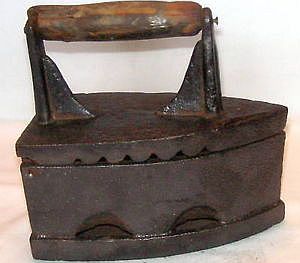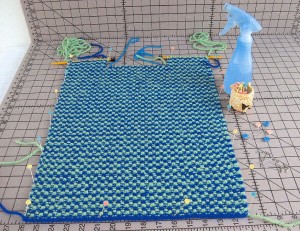It’s pretty much a daily occurrence: I approach the washing machine with a load of laundry, trying not to make eye contact with the ever-growing pile of clean cloth staring accusingly at me. Ironing. I hate ironing. I have friends who love it, who find it satisfying and soothing. They tell me that serenity washes over them. Who are they kidding? The only thing that washes over me when I contemplate the tragically wrinkled and rumpled waiting silently is resentment. Where’s the imagination in ironing? How many ways can you press pants? What can you possibly do to completed collars and cuffs that can be called creative?
How did all this smoothing of garments come to be desirable anyway? When I was knee-high to an ironing board Santa Claus brought me my very own toy iron. He brought my brother a truck. Yes indeed, gender roles were well ironed into place back then. Unlike the old folk song “dashing away with the smoothing iron” does not steal my heart away, but rather strikes terror into it. No really, when did the perfectly pressed place one into a socially acceptable category?
Do you suppose some Stone Age woman noticed that her grass mat looked more inviting when subjected to weight and heat? Did her smelly skins and furs become more appealing after being sprayed with water and covered with rocks yanked from fire? Does this mean she held the patent for those backbreaking, great heavy metal irons filled with hot coals that were in common use before the advent of electricity? No wonder they were called flat irons. Knocked you flat with exhaustion they did. I have to concede we have it easy.
But ironing, in relation to the smoothing of fabric that I’m making something from, I am happy to do. Pressing the pieces and seams when sewing is satisfying as that work is structural. The fabric is manipulated as a means to an end; it’s not the repetitive maintenance that the routine ironing of linens and garments requires.
The same applies to the preparation of knitted pieces, either prior to assembly, or after completion of the item. We knitters have a variety of techniques available to us – we can pin the pieces out to shape and spray them with water. We can dunk the pieces, or the finished article in water, wring out the excess and leave to dry. We can use a combination of both methods. We may choose to iron the knitted fabric, that is to say, apply heat and/or steam to it depending on the composition of the yarn – something which should be done with care.
Such processes smooth out the work and are generally referred to as blocking.
Call them what you will, these various methods should result in a better appearance of the fabric, and now that we’ve ironed this out, excuse me while I attend to the laundry.

![P1220862 [HDTV (1080)]](http://chasingcentaurs.com/wp-content/uploads/2014/09/P1220862-HDTV-1080-300x225.jpg)


